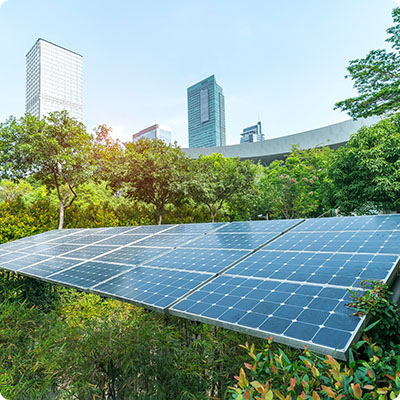The threat of drought
The United Arab Emirates is one of the countries with the lowest amount of water available in the world. There are no permanent rivers and only a few wadis carry the heavy burden of irrigating the desert. Yet water is free and Emiratis are among the world's biggest consumers, with 550 liters per capita every day, more than three times the consumption of a French person. Watering golf courses and parks has its role to play, but it is agriculture that pumps 80% of the water supply. Ninety percent of this water comes from the desalination of sea water, an extremely energy-intensive process.
The kings of oil conquering the sun
The UAE's economy was built on black gold and gas, but with its oil fields running out of steam, Abu Dhabi is looking to organize the post-oil era. Change is becoming essential, given that the United Arab Emirates is the fourth largest producer of greenhouse gases per capita in the world. On the eve of COP26, they even announced their desire to become the first zero-carbon state in the Gulf by 2050. Concrete projects are already flourishing, such as the creation of the world's largest solar park south of the capital. To ensure the energy transition, more than 35 billion euros have been invested in renewable energy.
The emergence of green urbanism
While 500,000 people lived in Abu Dhabi in 2000, at least 3 million residents are expected by 2030. The Abu Dhabi Vision 2030 program is organizing a sustainable urban plan, led by a young Canadian team. One of the challenges will be to create alternatives to the car, notably by creating 340 km of tramway tracks, but also by building pedestrian and bicycle paths. The construction of new neighborhoods to accommodate the growing population, especially foreigners, will be an opportunity to create narrow streets, and therefore shaded, and to include vegetation between buildings.
Masdar City: oasis or mirage?
In the middle of the Abu Dhabi desert, a new, modern and sustainable city has been emerging since 2007: Masdar City. Its objective: to allow the 50,000 residents expected by 2030 to live in a zero waste and zero carbon city. The reigning family will have spent 14 billion euros to build this showcase of Abudhabi modernism.
Only ten years after the first stone was laid, there were only a few hundred residents. Some of the technologies initially planned had to be removed from the program, such as the cooling towers that should have allowed the city to cool naturally. The most promising commitment of the project itself had to be qualified: the zero-carbon city will finally be a "low-emission city".Abu Dhabi National Parks
Jebel Hafit Desert Park is home to the highest peak in Abu Dhabi. While camel rides are the order of the day, other animals such as sand foxes and damsels inhabit the park. The latter, despite their appearance as small hares, are not rodents, but rather the closest land cousin of the elephant!
Without leaving the city, the Umm Al Emarat Park, one of the oldest parks in Abu Dhabi, is home to a botanical garden with more than 200 species of plants in an area of 7,000 square meters.
And who would expect to find the Mangroves National Park, a rich 74 square kilometer forest adjacent to the city center? Yet this protected area helps preserve this fragile and indigenous ecosystem, rich in marine species and birds, such as the pink flamingo or the heron.









